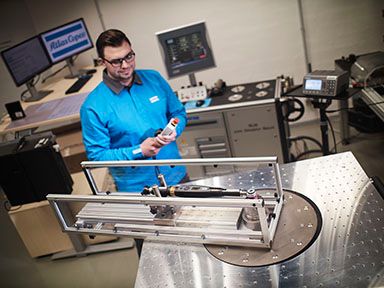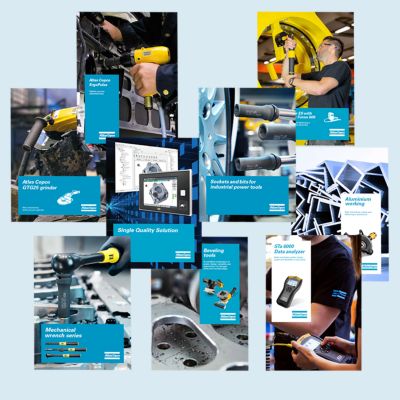Recalls and reworking on your assembly line can be avoided by monitoring quality during the tightening process, thus detecting failures immediately.
There are several ways of securing parts and components to each other, e.g. gluing, riveting, welding and soldering. However, by far the most common method of joining components is to use a screw to clamp the joint members with a nut or directly to a threaded hole in one of the components. The advantages of this method are the simplicity of design and assembly, easy disassembly, productivity and in the end – COST!
How to calculate torque?
The tightening torque is for practical reasons the criteria normally used to specify the pre-stress in the screw. The torque, or the moment of force, can be measured either dynamically, when the screw is tightened, or statically, by checking the torque with a torque wrench after tightening.

Torque = FORCE x LENGH
Torque specifications vary considerably depending on the quality demands of the joint. A safety critical joint in a wheel suspension of a motorcycle, for example, cannot be allowed to fail and is consequently subject to very stringent tolerance requirements.

A higher level of quality control is reached by adding the tightening angle to the measured parameters. In the elastic area of the screw this can be used to verify that all the members of a joint are present, e.g. that a gasket or a washer is not missing. Also, the screw quality can be verified by measuring the tightening angle, prior to snug level as well as for final torque-up.
In sophisticated tightening processes the angle can also be used to define the yield point and allow tightening into the plastic area of the screw.
How to measure torque?
Torque measurements are made according to one of two principles:
- Static measurement, when the tightening torque is checked after the tightening process has been completed
- Dynamic measurement, when the torque is continuously measured during the complete tightening cycle.
In conclusion, monitoring quality has traditionally involved measuring torque, which generates clamp load. However, tightening results are also impacted by variations in friction or components. Therefore, a second dimension, most commonly rotational angle, needs to be measured as well. Controlling and monitoring both torque and angle detects failures such as missing gaskets, cross threads, material problems, and operator errors. By ensuring quality in the tightening process you minimize costly recalls, reworking, and warranty claims, and avoid damage to your valuable reputation.
You can find the complete information by downloading our e-book below!
- Pocket Guide to Tightening Technique 3.2 MB, PDF
We also provide you with Atlas Copco’s unique tightening consulting solution that optimizes your tightening strategy from design (R&D) to mass production with our tightening laboratory and experts.




